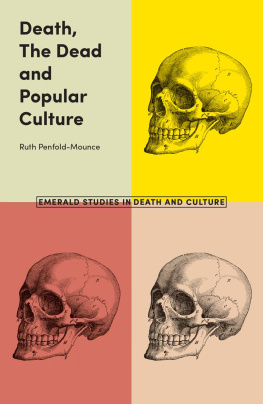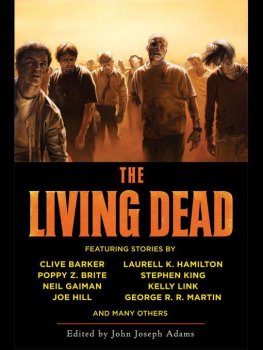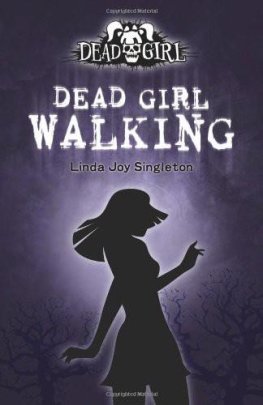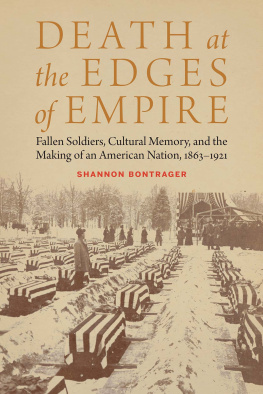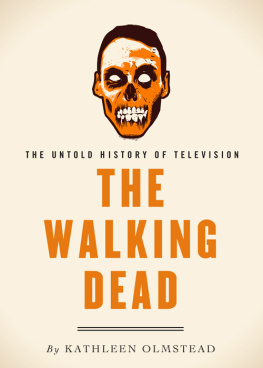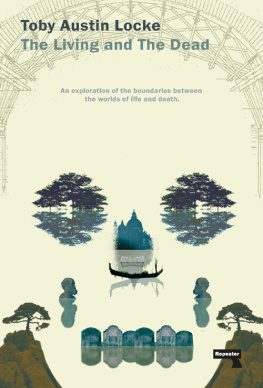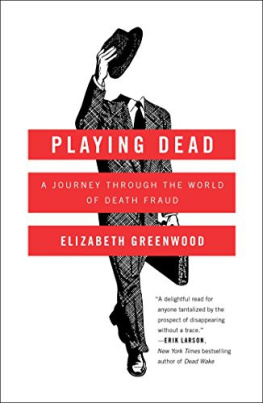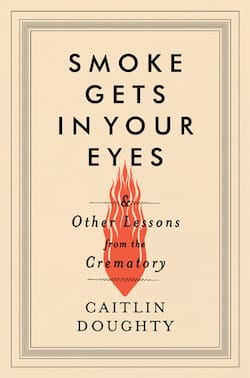DEATH, THE DEAD AND POPULAR CULTURE
EMERALD STUDIES IN DEATH AND CULTURE
Series Editors:
Ruth Penfold-Mounce, University of York, UK
Julie Rugg, University of York, UK
Jack Denham, York St John University, UK
Editorial Advisory Board: Jacque Lynn Foltyn, National University, USA; Lisa McCormick, University of Edinburgh, UK; Ben Poore, University of York, UK; Melissa Schrift, East Tennessee State University, USA; Kate Woodthorpe, University of Bath, UK
Emerald Studies in Death and Culture provides an outlet for cross-disciplinary exploration of aspects of mortality. The series creates a new forum for the publication of interdisciplinary research that approaches death from a cultural perspective. Published texts will be at the forefront of new ideas, new subjects, new theoretical applications, and new explorations of less conventional cultural engagements with death and the dead.
Published Titles
Brian Parsons, The Evolution of the British Funeral Industry in the 20th Century: From Undertaker to Funeral Director
Forthcoming Titles
Tim Bullamore, The Art of Obituary Writing
Matthew Spokes, Jack Denham, and Benedikt Lehmann, Death, Memorialization and Deviant Spaces
Racheal Harris, Meaning and Symbolism in Pet Inspired Memorial Tattoos: Echoes and Imitations of Life
DEATH, THE DEAD AND POPULAR CULTURE
BY
RUTH PENFOLD-MOUNCE
University of York, UK
United Kingdom North America Japan India
Malaysia China
Emerald Publishing Limited
Howard House, Wagon Lane, Bingley BD16 1WA, UK
First edition 2018
Copyright Ruth Penfold-Mounce, 2018
Reprints and permissions service
Contact:
No part of this book may be reproduced, stored in a retrieval system, transmitted in any form or by any means electronic, mechanical, photocopying, recording or otherwise without either the prior written permission of the publisher or a licence permitting restricted copying issued in the UK by The Copyright Licensing Agency and in the USA by The Copyright Clearance Center. No responsibility is accepted for the accuracy of information contained in the text, illustrations or advertisements. The opinions expressed in these chapters are not necessarily those of the Author or the publisher.
British Library Cataloguing in Publication Data
A catalogue record for this book is available from the British Library
ISBN: 978-1-78743-054-9 (paperback)
ISBN: 978-1-78743-053-2 (E-ISBN)
ISBN: 978-1-78743-943-6 (Epub)
CONTENTS
LIST OF FIGURES
PREFACE
My fascination with death and the dead goes back to my doctoral studies (20012005) when I came across tales of doctors keeping body parts taken from famous dead criminals whom they had autopsied. Combining this macabre souvenir trade in the dead with popular culture was a remarkably easy step considering my wider interest in celebrity and popular culture. I have come to embrace the quote by JM Barries well-loved character Peter Pan (Peter Pan, 1911) who said that to die would be an awfully big adventure. Pan got it almost right but failed to mention that to research death is a big adventure, too, and this book is proof of that.
Death, The Dead and Popular Culture is part of the first wave of publications under the Emerald Series in Death and Culture which was inspired by the first biennial Death and Culture Conference held at the University of York, UK, in 2016. The book series is driven by the intention of providing an outlet for cross-disciplinary exploration of aspects of mortality. It seeks to provide a forum for research that approaches death from a cultural perspective and is fully supportive of new ideas and subjects, new theoretical applications, and new explorations of less conventional engagements with death and the dead. The Emerald Series in Death and Culture is run by myself, Dr Julie Rugg (University of York, UK), and Dr Jack Denham (York St John University, UK), and we put out a call for book proposals in January 2017. So far, in these early stages, we have been successful to recruit passionate researchers working in fascinating fields of death research and we look forward to publishing many books in the future.
My contribution to death studies research extends beyond the book series and conference and has branched out to include the establishment of the Death and Culture Network (DaCNet) at the University of York, UK. This interdisciplinary network brings together scholars with an interest in death, provides support and training for doctoral researchers rooted in death studies, and actively pursues public engagement. The hope for DaCNet in the future is to provide leadership and a sense of unity to the international community of death scholars who examine the vibrant and diverse relationship between death and culture in all its varied forms.
Much gratitude goes to Philippa Grand and Emerald Publishing for not just being willing to publish this book but to support the Emerald Series on Death and Culture.
I presented versions of chapter two at the Centre for Death and Society Conference (CDAS) in 2016 and as a Keynote Speaker at Death and the Maiden Conference in Lodz, Poland, in 2017. Both of these conferences were crucial in refining my ideas, so thank you CDAS and Kasia Malecka for persuading me to renew my passport and visit her fabulous homeland.
Thanks are also due to Dave Beer for his support, endless encouragement and much-needed lunch breaks. This book has benefitted hugely from his insight and prevented chapter three from being scrapped in its entirety in a fit of pique and self-doubt as well as rescuing chapter four with an improved framework.
My love and thanks as ever go to Daniel for good-humouredly putting up with my macabre enthusiasm for death and corpses (Theres a mummified arm in Wiltshire!) and to Abi and Sam who know far more about death and the dead than the average children under eight.
Dr Ruth Penfold-Mounce
University of York
INTRODUCTION: THE AGENCY OF THE DEAD
The dead are inanimate body remains and for all intents and purposes, they lack power, control, or a voice. They are a life that has ended. They have shifted from one state of being to another. But death is not that simple. The dead can, and do, have agency; in this context agency refers to a mode of action whereby the dead are considered able to influence and alter the world despite death. In 1988, Bob Dylan wrote Death Is Not the End and he was right. This book is not about dying or grieving, and it is not about the practicalities of death and the death industry or even rituals of death-although these are vital lines of research. Instead, this book is about how death is not the end but a beginning, albeit a posthumous one. It considers how death and the dead possess value and the ability to entertain making them into a central, commonplace phenomenon consumed by a plethora of international individuals from around the globe. Remarkably, few sociologists and even fewer death studies scholars have devoted their research energy toward an in-depth examination of the relationship among death, the dead and popular culture. This is despite popular . This book intends to rectify the gap in considering representations of death and the dead within popular culture (and not just television) and in arguing that, in a global consumer culture, corpses are gaining unprecedented agency.

